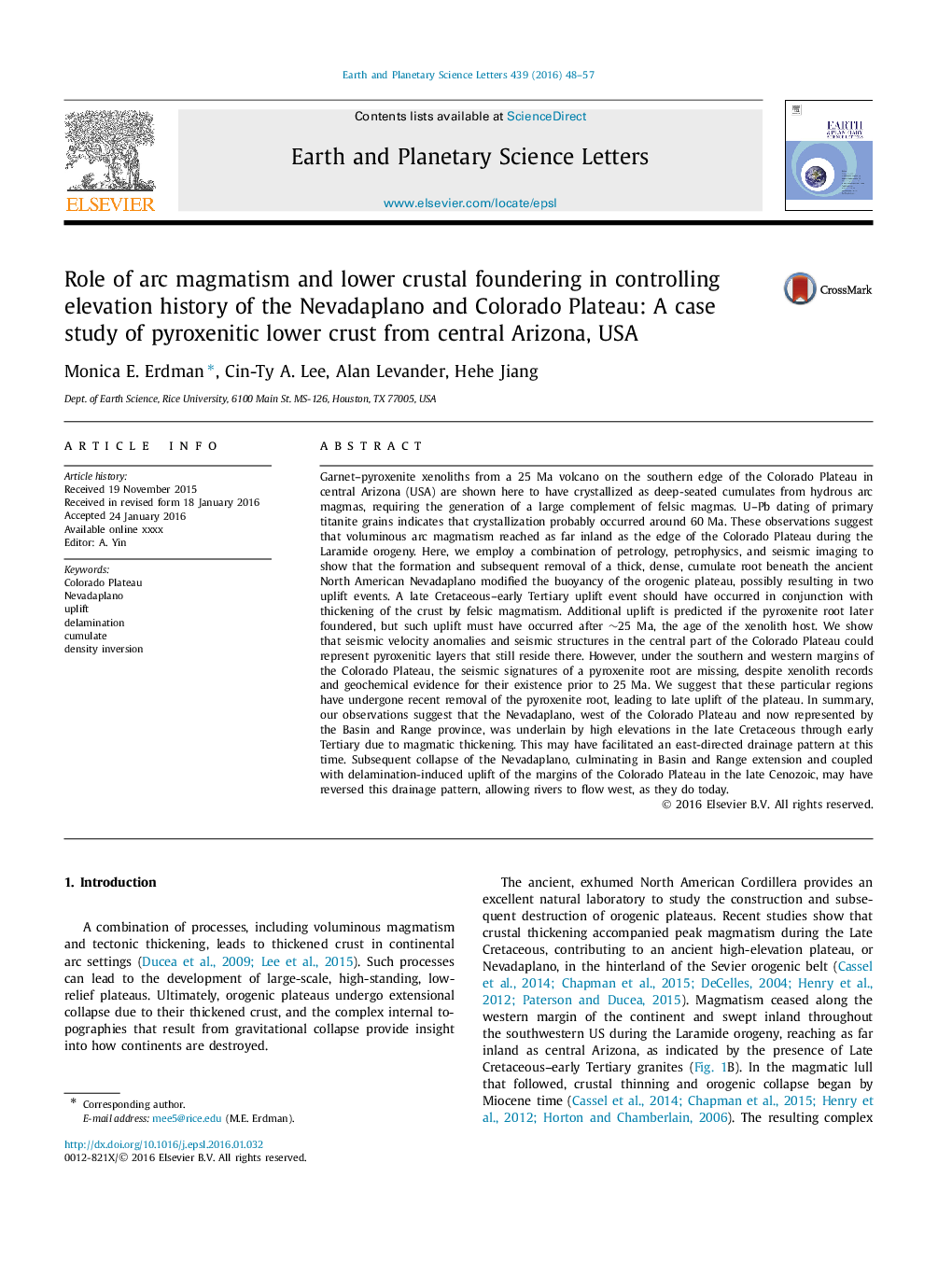| کد مقاله | کد نشریه | سال انتشار | مقاله انگلیسی | نسخه تمام متن |
|---|---|---|---|---|
| 6427616 | 1634717 | 2016 | 10 صفحه PDF | دانلود رایگان |
عنوان انگلیسی مقاله ISI
Role of arc magmatism and lower crustal foundering in controlling elevation history of the Nevadaplano and Colorado Plateau: A case study of pyroxenitic lower crust from central Arizona, USA
ترجمه فارسی عنوان
نقش ماگماتیسم قوسی و پایین ترین پوسته شدن در کنترل ارتفاع ارتفاعات نوا و پالائو کلوادو: مطالعه موردی پوسته پایین پیروکسنیتی از مرکز آیزینا، ایالات متحده
دانلود مقاله + سفارش ترجمه
دانلود مقاله ISI انگلیسی
رایگان برای ایرانیان
کلمات کلیدی
فلوریدا کلرادو، نواداپالانو، بالا بردن، لایه لایه شدگی، جمع کردن انحنا تراکم،
موضوعات مرتبط
مهندسی و علوم پایه
علوم زمین و سیارات
علوم زمین و سیاره ای (عمومی)
چکیده انگلیسی
Garnet-pyroxenite xenoliths from a 25 Ma volcano on the southern edge of the Colorado Plateau in central Arizona (USA) are shown here to have crystallized as deep-seated cumulates from hydrous arc magmas, requiring the generation of a large complement of felsic magmas. U-Pb dating of primary titanite grains indicates that crystallization probably occurred around 60 Ma. These observations suggest that voluminous arc magmatism reached as far inland as the edge of the Colorado Plateau during the Laramide orogeny. Here, we employ a combination of petrology, petrophysics, and seismic imaging to show that the formation and subsequent removal of a thick, dense, cumulate root beneath the ancient North American Nevadaplano modified the buoyancy of the orogenic plateau, possibly resulting in two uplift events. A late Cretaceous-early Tertiary uplift event should have occurred in conjunction with thickening of the crust by felsic magmatism. Additional uplift is predicted if the pyroxenite root later foundered, but such uplift must have occurred after â¼25 Ma, the age of the xenolith host. We show that seismic velocity anomalies and seismic structures in the central part of the Colorado Plateau could represent pyroxenitic layers that still reside there. However, under the southern and western margins of the Colorado Plateau, the seismic signatures of a pyroxenite root are missing, despite xenolith records and geochemical evidence for their existence prior to 25 Ma. We suggest that these particular regions have undergone recent removal of the pyroxenite root, leading to late uplift of the plateau. In summary, our observations suggest that the Nevadaplano, west of the Colorado Plateau and now represented by the Basin and Range province, was underlain by high elevations in the late Cretaceous through early Tertiary due to magmatic thickening. This may have facilitated an east-directed drainage pattern at this time. Subsequent collapse of the Nevadaplano, culminating in Basin and Range extension and coupled with delamination-induced uplift of the margins of the Colorado Plateau in the late Cenozoic, may have reversed this drainage pattern, allowing rivers to flow west, as they do today.
ناشر
Database: Elsevier - ScienceDirect (ساینس دایرکت)
Journal: Earth and Planetary Science Letters - Volume 439, 1 April 2016, Pages 48-57
Journal: Earth and Planetary Science Letters - Volume 439, 1 April 2016, Pages 48-57
نویسندگان
Monica E. Erdman, Cin-Ty A. Lee, Alan Levander, Hehe Jiang,
